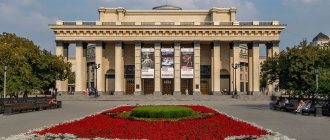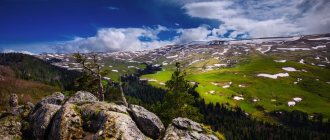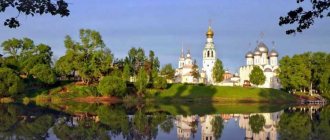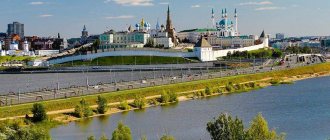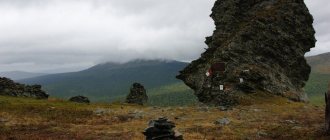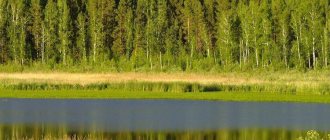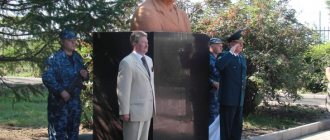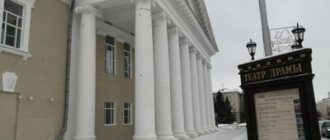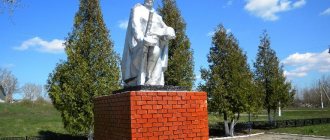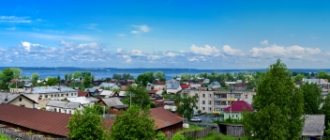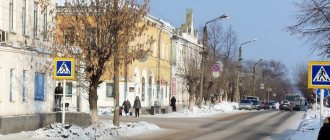The Kurgan region is located in a unique area, at the junction of the Urals and Siberia , where healing springs of mineral water have been flowing out of the ground for many centuries.
The Kurgan region is a repository of exceptional and unique places, an ensemble of provincial antiquity, the memory of the Decembrists, architectural and temple architecture of past centuries and shrines, combined with modernity, impressing with its spiritual power. Vast expanses of hunting grounds and over three thousand lakes for fishing, recreation, treatment and recovery.
Houses of the Decembrists
There are many museums in the city, some of which are unique across the country. These, for example, include objects related to the Decembrists.
In one of these houses in 1845-1846. The Decembrist poet V.K. Kuchelbecker, a former lyceum student friend of Pushkin, lived with his family (wife and two children). In the house of the famous Decembrist, it was possible to restore the atmosphere of that time. Be sure to visit these attractions of Kurgan. Photos of the exhibition will not convey the entire atmosphere; these exhibits must be seen with your own eyes.
In 1975, in the house where the family of the Decembrist M.M. Naryshkin lived in the 30s of the 19th century, a museum was created, which is considered a branch of the regional local history museum. After all the rooms inside were completely restored (libraries, living room, dining room and master's room), the house acquired an almost original appearance. Craftsmen used Karelian birch and mahogany to make furniture. Among other items there are many bronze items, silverware and porcelain.
“Sword, cross, road to the temple”: a monument to Alexander Nevsky was unveiled in Kurgan
This monument appeared in the capital of Trans-Urals thanks to the Tsargrad society.
Grand Duke Alexander Nevsky is considered the patron saint of the Trans-Urals. Therefore, the opening of the monument to the saint became an event for the region. A bronze sculpture 2.3 meters high on a 1.8 meter high monument was installed in the city garden of Kurgan next to the temple fence.
Photo: Kurgan diocese.
The author was sculptor Alexey Ignatov from the Grekov Studio of Military Artists, and the bronze casting, delivery and installation on the pedestal was carried out by Nizhny Novgorod craftsmen from the Zodchie art and restoration workshops.
The guest of the ceremony was the deputy head of the World Russian People's Council (VRNS), chairman of the Tsargrad society Konstantin Malofeev .
Photo: Kurgan diocese.
When asked by Kurgan journalists why they decided to open a monument here in Kurgan, Konstantin Malofeev said that Metropolitan Daniel asked him about it:
This year is the 800th anniversary of Alexander Nevsky, and we are participating throughout the country in various events - from St. Petersburg, where the holy relics of the Grand Duke rest, Pereyaslavl in the Yaroslavl region, where he was born, and many, many other places,
Malofeev noted that, together with like-minded people, he is restoring historical continuity with 1000-year-old Russia, which is now enshrined in the country’s Constitution.
Photo: Kurgan diocese.
The prayer service and the ceremony of consecrating the monument were conducted by Metropolitan Daniel , and he was co-served by bishops Vladimir Shadrinsky and Parmen Vargashinsky.
Governor of the Kurgan region Vadim Shumkov considers the patron saint of the Trans-Urals a role model:
This man created what we call Russia today. In the territory where our country is now, there was discord: from the west one military threat was replaced by another, a horde was approaching from the south, burning out the country. Nevsky was able to repel the enemy and became the name of Russia. This example teaches us all how to serve the country, people, and God.
Photo: Kurgan diocese.
Konstantin Malofeev expressed the hope that the monument to the saint will help Trans-Ural children find the path to faith:
I would like Kurgan boys, passing by the monument, to look at Alexander Nevsky and be inspired by the sword that he holds in his hands, and then turn their gaze from the sword to the cross shining on this cathedral, which looks the same. I would like this monument to become for them the road to the temple.
Photo: Kurgan diocese.
Metropolitan Daniel, in gratitude, presented Konstantin Malofeev with the image of the Mother of God of Kazan. And, looking at this icon, he wished to remember the fertile land of Kurgan:
You have a wonderful television channel and publications. The Tsargrad team loves Russia and serves it, and will serve until its last breath.
Then the guests went to the site of the unveiling of the monument to Prince Alexander Nevsky, which was installed 40 meters from the temple fence. The guard of honor near the pedestal was carried by the Youth Army members from school No. 75 in Kurgan.
Photo: Kurgan diocese.
Metropolitan Daniel performed the consecration ceremony, sprinkling the monument with holy water. The participants of the celebration laid flowers at the monument.
Aviation Museum
The Museum of Aviation Technology is located on Gagarin Street and has been operating since 1985. It is considered unique and the only one in the entire Urals and Siberia. On its vast territory, covered with asphalt, with an area of 5.5 thousand square meters. m, there are various types of aircraft. They are represented by military ones - "Migami" and "Sushki" - and passenger ones - Ilyushin and Antonov.
This powerful complex is worth visiting Kurgan. Sights of this magnitude should be seen by all residents of Russia.
